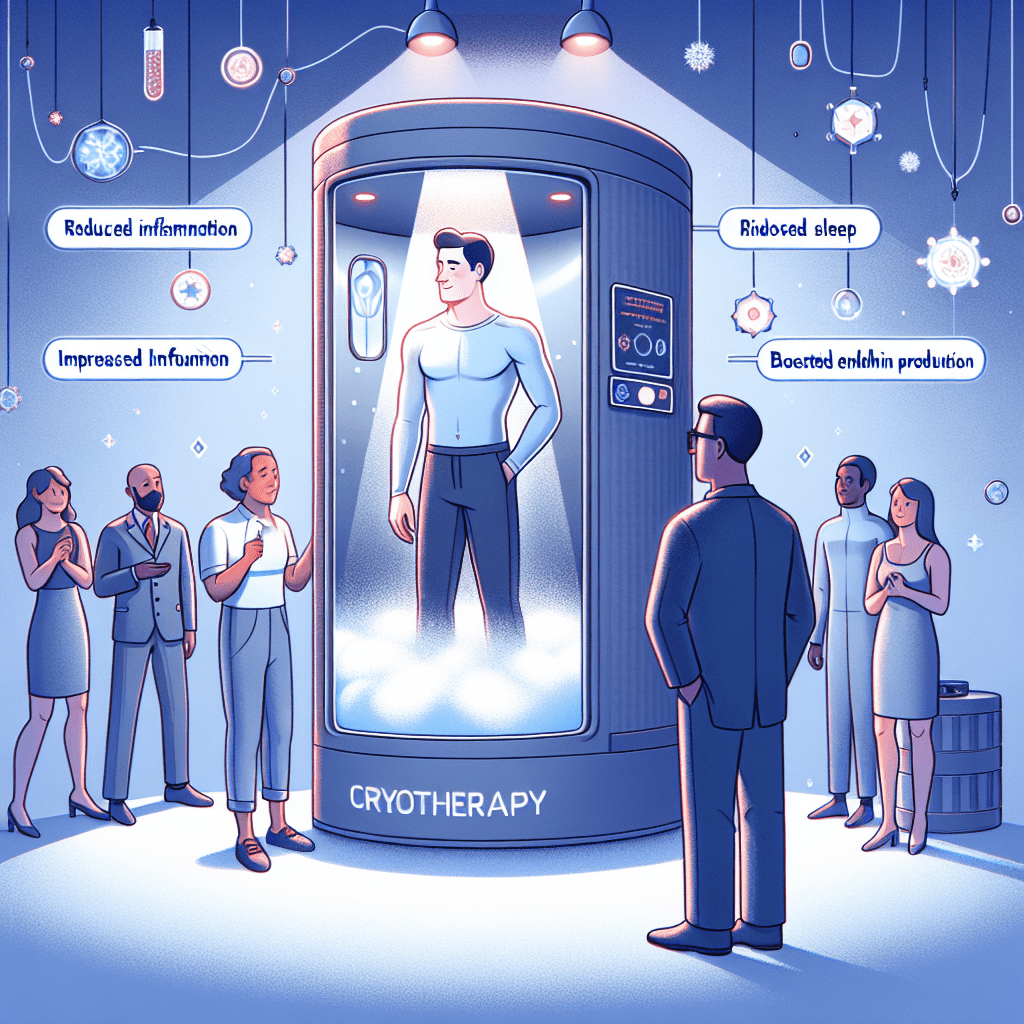What are the disadvantages of ice baths?

TL;DR
Ice baths are a popular recovery tool for post-workout routines. Athletes and fitness experts praise ice baths’ advantages for muscle recovery, such as reduced inflammation and delayed muscle pain. However, ice baths and cold water therapy have potential downsides that may outweigh some benefits.
Ice bath disadvantages can include cold-induced stress on the body and hypothermia, psychological discomfort due to anxiety, and panic. Those looking for alternative active recovery methods should consider compression therapy or massage, which offer similar benefits. To avoid potential cold-induced disadvantages, selecting a method that suits you and your goals is important. When in doubt, consult a healthcare professional.
Ice baths, a form of cold water therapy, have gained popularity among athletes and fitness enthusiasts for their post-workout recovery benefits. They often boast ice bath advantages such as reducing inflammation and muscle recovery time and improved overall athletic performance.
However, ice baths have potential downsides, much like any other therapeutic practice. So, before adding cold-water therapy to your health and wellness routine, it’s critical to understand the effects of ice baths on your body and how they can lead to potential disadvantages.
While it’s common for many to highlight ice bath advantages, it’s equally important to consider the disadvantages. A balanced approach allows you to make informed decisions about whether or not it’s right for you to incorporate ice baths into your routine.

Advantages of Ice Baths
Ice baths are often associated with a wide range of health and wellness benefits. These benefits are particularly relevant to athletic performance and sports recovery. However, even if you aren’t a professional athlete, you can benefit from the advantages of ice baths as part of your post-workout routine or health and wellness program.
Post-workout Recovery
One of the most commonly known benefits of ice baths is their ability to help in post-workout recovery. The cold temperatures help to constrict blood vessels, limiting blood flow throughout the body. This reduces inflammation and swelling in your muscles.
This is a major reason why ice baths are a common practice for athletes. By reducing inflammation, ice baths alleviate common problems such as Delayed Onset Muscle Soreness (DOMS), allowing you to return to your regularly scheduled exercises faster.
Stress Reduction
While the idea of plunging into an ice-cold bath might seem stressful, cold water therapy can aid in relieving stress. As a result of a cold plunge, the body releases a mix of endorphins, the body’s natural “happy” hormones. Reducing stress leads to a more positive, energized, and motivated outlook on life and an uptick in mood.
Circulation and Immunity
Ice baths offer additional benefits similar to cryotherapy. One such benefit is improved circulation, thanks to the repeated constricting of blood vessels. Better circulation helps improve cardiovascular health. What’s more, ice baths may boost the immune system. The shock of the cold water triggers the production of white blood cells, which many believe strengthen your defenses against illness.

Who Benefits from Ice Baths and Cryotherapy?
The advantages and benefits of ice baths and cryotherapy vary from person to person. Some may find the practice is highly beneficial to their overall health. Others may consider an ice bath as a remedy for specific ailments. Then, some see no noticeable effects from these treatments or consider them not worth the effort.
However, certain demographics may benefit the most from an ice bath therapy wellness routine.
Athletes
Muscle recovery for athletes is key to optimal training. The anti-inflammatory effects of ice baths soothe sore muscles, resulting in faster athlete recovery after high-intensity workouts and training sessions.
Fitness Enthusiasts
For those wishing to stay on a consistent workout schedule, it’s important to avoid problems, such as DOMS, that may cause you to skip a day at the gym. An advantage of cryotherapy is its ability to aid in healing muscle strain post-workout, allowing you to stick with your fitness routine.
Chronic Pain Sufferers
Cryotherapy is often a recommended remedy for those suffering from pain, such as sprains, arthritis, tendonitis, etc. Often, this treatment is administered through placing an ice pack or bag of frozen peas on the painful area. Studies have shown, however, that cold-water therapy can alleviate chronic pain. A study in the British Medical Journal showed that swimming in cold water can improve post-operative pain in patients.
It’s important to have an open mind when approaching ice baths or cryotherapy and understand that they are not a magic way to resolve all health and wellness ailments. However, after speaking with your medical professionals, they may be an optional therapy to add to your fitness, training, or pain management treatment.

Ice Bath Disadvantages
While it’s common for many to highlight ice bath benefits, it’s equally important to consider the potential disadvantages of this practice. These can range from physical complications to psychological discomforts which vary widely from person to person.
Physical Disadvantages of Ice Baths
While cold water therapy can stimulate your body’s natural healing processes, it may have a negative effect on those unaccustomed to cold temperatures. For example, the cold shock response may increase blood pressure and heart rate, straining the heart muscle.
One of the main physical consequences is the potential for cold-induced stress. This occurs when skin and core temperature lowers too much and causes too much stress on the body. Severe cases can lead to serious health problems, including nerve and tissue damage.
Similarly, a severe but rare downside is the risk of hypothermia, which occurs when your body’s core temperature drops too low. This is why it’s crucial to monitor the temperature of the ice water and listen to your body.
Psychological Disadvantages of Ice Baths
Plunging into an ice-cold bath can be an uncomfortable and stressful experience. This is especially true for those with a low cold tolerance, certain medical conditions, or who are new to the practice. This can lead to feelings of anxiety and panic, two of the psychological disadvantages of ice baths.
While ice baths may temporarily boost mood and energy thanks to a rush of endorphins triggered by the cold water, these feelings can be short-lived. Over time, the body becomes used to the cold, diminishing the endorphin boost.
Moreover, those who associate ice baths with discomfort are less likely to maintain regular frequency. This can undermine any potential therapeutic benefits. Consistency is key when it comes to any health and wellness practice.
When to Speak to a Professional
For those suffering from Raynaud’s Syndrome, consulting with medical professionals before taking an ice bath is crucial. Because cold water therapy causes blood vessels to constrict, limiting blood flow to the extremities, those with Raynaud’s may be at a higher risk of sores, frostbite, and tissue death when exposed to cold water.
The ice-cold water of an ice bath can increase both heart rate and blood pressure and cause arrhythmia or irregular heartbeat. These factors may cause serious health problems for those with high blood pressure or heart disease.
Always consult your medical professionals before starting a new therapy treatment or health and wellness routine. This allows you to reap the benefits while avoiding the risks.

Alternatives to Ice Baths for Recovery
Given the potential disadvantages, let’s explore alternative therapy methods for sports recovery. These alternatives can offer similar benefits without cold-induced drawbacks, making them a good option for those who cannot use cold water therapy or find ice baths uncomfortable or ineffective.
Active Recovery
A popular alternative to ice baths is active recovery, which involves light, low-impact exercises that promote blood flow and speed up recovery. Active recovery can be particularly beneficial for athletes because it allows them to continue moving without putting excessive stress on their muscles.
Compression Therapy
Another alternative is compression therapy. This involves wearing special wraps to apply pressure to specific parts of the body. These can be worn outside or during exercise. The added pressure helps reduce inflammation and speed up muscle recovery as well as other health benefits.
Massage Therapy
Massage therapy is another excellent option, as it offers benefits similar to ice baths. It can help relieve muscle tension, improve circulation, and promote relaxation. A study in the Journal of Athletic Training showed that massage therapy effectively alleviated DOMS by 30% and reduced muscle swelling post-workout.
Comparing Alternatives
When comparing the benefits, it’s clear that each alternative has its advantages. For example, active recovery helps you maintain flexibility and mobility, compression therapy targets specific areas of the body, and massage therapy offers a holistic approach to recovery. Massage also addresses both physical and mental wellness.
While ice baths can offer immediate relief from muscle soreness and inflammation, the possible disadvantages may outweigh the benefits. For some, certain health conditions prohibit or limit their ability to use ice bath therapy for recovery. Looking for alternative options is a good idea because the best recovery method depends on preference, health, and overall fitness goals.
Ice Bath Advantages vs. Disadvantages
Ice baths are widely recognized for their overall health and wellness benefits. The water’s cold temperature can help reduce inflammation, speed up muscle recovery, and boost mood and energy levels.
However, it’s especially important to consider the possible disadvantages of ice baths. Downsides can include cold-induced stress, hypothermia, anxiety, and panic caused by the intense cold.
When the potential disadvantages outweigh your ice bath advantages, it’s worth exploring alternative recovery techniques. Treatments such as active recovery, compression therapy, and massage therapy offer similar benefits with fewer drawbacks.
When it comes to whether or not you add ice baths to your fitness routine, consider your preferences, health conditions, and overall wellness goals. Always speak to a medical professional before beginning cold-water therapy. Most importantly, remember that while ice baths may work for some, it’s okay if they don’t work for you. Instead, find an alternative you can enjoy while still receiving all the benefits of ice baths.


